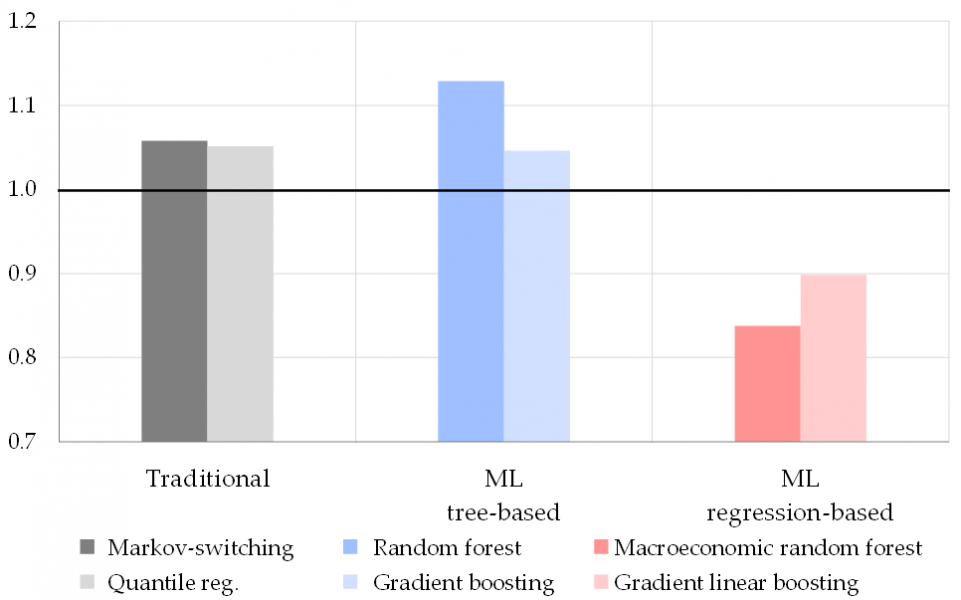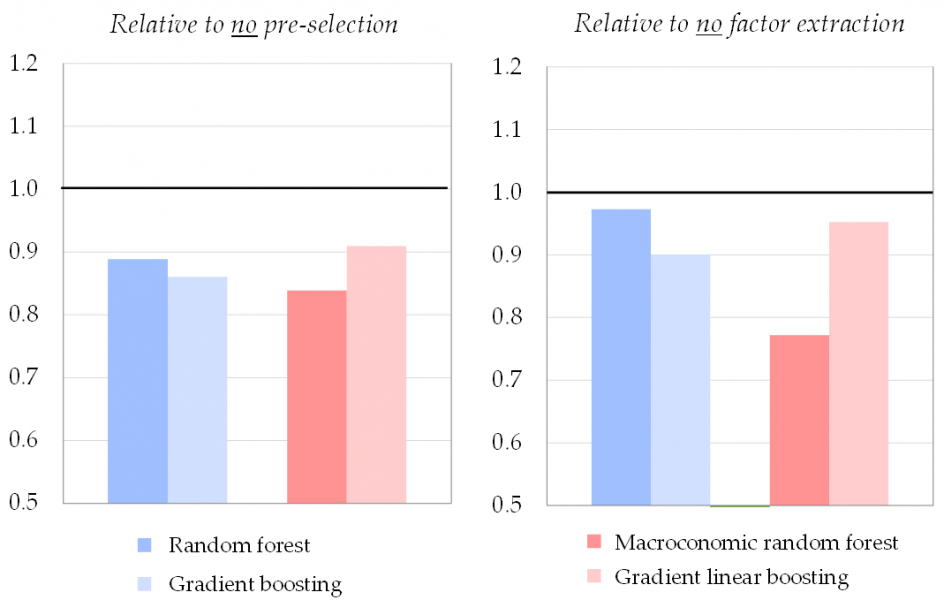References
Bai, J., and Ng, S. (2008). “Forecasting economic time series using targeted predictors”, Journal of Econometrics, 146(2), pp. 304–317.
Bussière, M., Callegari, G., Ghironi, F., Sestieri, G., and Yamano, N. (2013). “Estimating Trade Elasticities: Demand Composition and the Trade Collapse of 2008-2009”, American Economic Journal: Macroeconomics, 5(3), pp. 118–151.
Chen, T., and Guestrin, C. (2016). “XGBoost: A Scalable Tree Boosting System”, in Proceedings of the 22nd ACM SIGKDD International Conference on Knowledge Discovery and Data Mining, pp. 785–794.
Chinn, M., Meunier, B., and Stumpner, S. (2023). “Nowcasting world trade with machine learning: a three-step approach”, Working Paper Series, No 2836, European Central Bank.
Efron, B., Hastie, T., Johnstone, I., and Tibshirani, R. (2004). “Least angle regression”, Annals of Statistics, 32(2), pp. 407–499.
Goehry, B. (2020). “Random forests for time-dependent processes”, ESAIM: Probability and Statistics, 24, pp. 801–826.
Goulet-Coulombe, P. (2020). “The Macroeconomy as a Random Forest”, arXiv pre-print.
Goulet-Coulombe, P., Leroux, M., Stevanovic, D., and Surprenant, S. (2022). “How is machine learning useful for macroeconomic forecasting?”, Journal of Applied Econometrics, 37(5), pp. 920–964.
Stock, J., and Watson, M. (2002). “Forecasting using principal components from a large number of predictors”, Journal of the American Statistical Association, 97(460), pp. 1167–1179.







